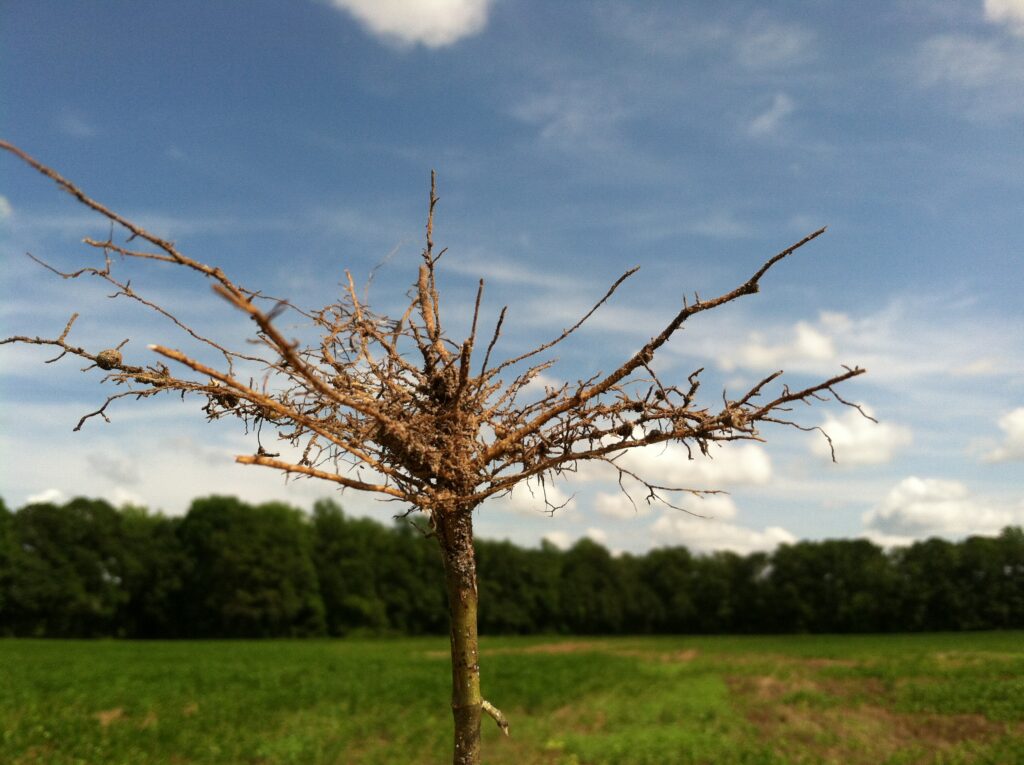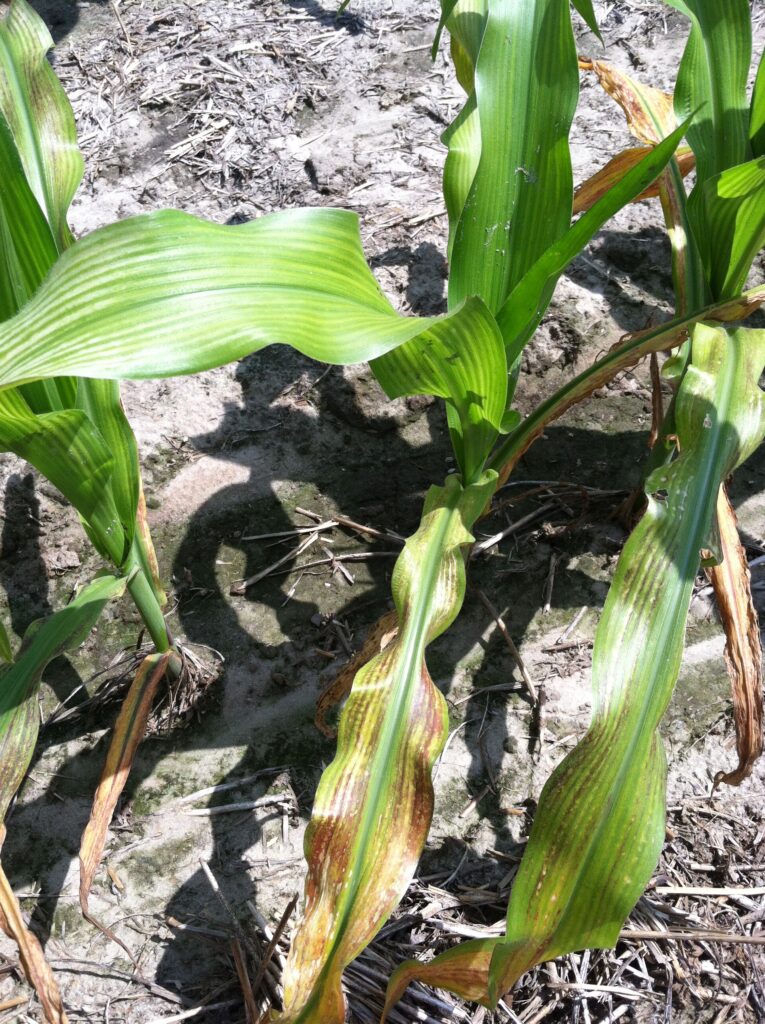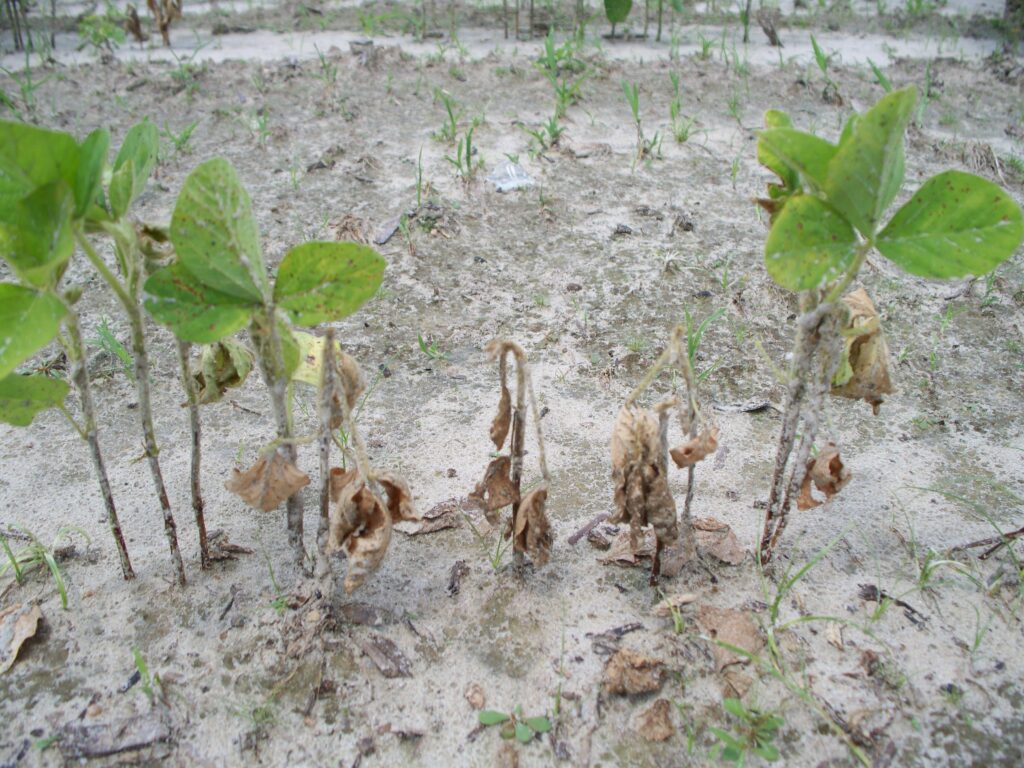When Fertilizer Is NOT the Reason for Poor Plant Growth
go.ncsu.edu/readext?884810
en Español / em Português
El inglés es el idioma de control de esta página. En la medida en que haya algún conflicto entre la traducción al inglés y la traducción, el inglés prevalece.
Al hacer clic en el enlace de traducción se activa un servicio de traducción gratuito para convertir la página al español. Al igual que con cualquier traducción por Internet, la conversión no es sensible al contexto y puede que no traduzca el texto en su significado original. NC State Extension no garantiza la exactitud del texto traducido. Por favor, tenga en cuenta que algunas aplicaciones y/o servicios pueden no funcionar como se espera cuando se traducen.
Português
Inglês é o idioma de controle desta página. Na medida que haja algum conflito entre o texto original em Inglês e a tradução, o Inglês prevalece.
Ao clicar no link de tradução, um serviço gratuito de tradução será ativado para converter a página para o Português. Como em qualquer tradução pela internet, a conversão não é sensivel ao contexto e pode não ocorrer a tradução para o significado orginal. O serviço de Extensão da Carolina do Norte (NC State Extension) não garante a exatidão do texto traduzido. Por favor, observe que algumas funções ou serviços podem não funcionar como esperado após a tradução.
English
English is the controlling language of this page. To the extent there is any conflict between the English text and the translation, English controls.
Clicking on the translation link activates a free translation service to convert the page to Spanish. As with any Internet translation, the conversion is not context-sensitive and may not translate the text to its original meaning. NC State Extension does not guarantee the accuracy of the translated text. Please note that some applications and/or services may not function as expected when translated.
Collapse ▲Typically, when plants experience poor growth, the assumption is that the plant lacked some nutrient. Thus, adding more or a different fertilizer may be considered. However, a lack of nutrients is rarely the reason for poor plant growth or poor yield in NC if one is following the recommendation of the NCDA & CA Agronomic Soil Test Reports.
The NCDA & CS uses an index system to quantify results. Phosphorus (P) and Potassium (K) are on a scale such that anything with an index of 50 or higher is not likely to respond to additional fertilization. Sulfur and micronutrients are on a lower scale with index value of 24 or lower requiring adding nutrients. Using this index system has proven to be effective. In fact, recent studies have indicated that the critical levels for some nutrient could be much lower.
Consider that the index for phosphorous (P) & potassium (K) of 50 relate to 107 lbs./ac of P and 174 lbs./ac of K, respectively. This is ample P & K for most crops and vegetables grown within this area without the need to add more fertilizer containing P and K. Similarly, a sulfur (S) index of 25 has about 21 lbs./ac of sulfur and a manganese (Mn) index o 25 has about 7 lbs./ac of manganese. All are sufficient for virtually any crop and yield within Eastern NC.
Realize that a P-index of 200 has over 428 lbs./ ac of P available for plant use. A K-index of 100 has 348 lbs./ac of K. Index values of 50 for Mn, Copper & Zinc relates to 14, 2 and 4 lbs./ac respectively. All of these nutrient levels are extremely excessive. Thus, should poor plant growth develop, nutrient deficiency is not the reasons for poor growth. Before assuming fertility is the reason for poor yield, examine potential yield robbing impacts below.
Limited Root System
1. Poor soil structure or compacted soil may result in root restricting layers. These layers prohibit roots from growing deep into the soil where they can reach water and nutrients. This can be especially critical during periods of drought. Such root restricting layers will result in shallow root systems with an increase of lateral roots just a few inches deep. These plants will wilt rapidly during periods of drought.
2. Conversely, these same growth restricting layers in the soil may also impede the downward movement of water. Thus, during periods of excessively heavy rainfall, these layers will keep water (and plant roots) within the upper soil profile limiting root development. Water saturated soils rob the soil of oxygen and nitrogen to limit plant growth.
Typically, these root restricting layers develop within sandy soils. To correct root restricting layers, deep tillage is required. Tillage should be performed as deep as possible yet not so deep as to reach the clay layers of the soil.
3. Herbicide Injury – Pre-emergent herbicides aid in control of weeds. However, they also may limit root growth. As such, the limited root system will limit plant growth for a short period. If improper rates are applied or one fails to utilize the proper crop rotation restriction, stunting may be detrimental and cause severe yield loss.
4. Poor soil pH will restrict the root growth of many plants. Within Eastern NC, soils are naturally acid. Thus, improper soil pH will limit root growth to just a few inches deep. Too, some nutrient availability depends upon the chemical form of the nutrient. One example is manganese. Improper soil pH will result in a chemical form of the nutrient that is unavailable to the plant. To correct this, simply follow the NCDA & CS lime recommendations.
Poor Water Management
1. Excessive nutrient leaching, or movement of nutrients below the root zone by heavy rainfall, can greatly reduce the plant’s ability to grow. Leaching will move nutrients such as N, K, S and even magnesium Mg deeper into the soil profile just beyond root growth. If this occurs during the early stages of plant growth, then these nutrients are unavailable to the plant. In time, the roots may grow deeper to utilize these nutrients. However, at least temporarily, the plant may suffer poor growth.
2. In contrast to leaching, water saturated soils greatly and rapidly deplete nitrogen through a process called denitrification. Denitrification of nitrogen can occur any time soils receive water in excess of water holding capacity. For most soils within Eastern NC, this is only about 2-3 inches of rainfall. If a soil hard pan or restricting layer exists, the water storage capacity could be much less. Additionally, the low oxygen levels in the soil greatly reduce plant transpiration. Thus, unless corrected, plants can die. Even should plant recover as soils drain, yield will be loss.
Disease & Pests
1. Nematodes are perhaps the most commonly overlooked reason plant roots develop slowly. Root Knot, Lesion, Stunt, and Stubby Root are common nematodes. These microscopic worms will feed on roots causing poor growth. In some cases, plants will outgrow the damage. Yet yield loss has already occurred. Crop rotation, utilization of resistant varieties, and soil fumigation are the only means of management. For a limited number of crops, biological products or other pesticides may provide temporary protection.
2. Insects also may inhibit root growth by feeding on the root system. In severe cases, this will kill the plant. In contrast, thrips will concentrate feeding on newly develop leaves and buds causing poor growth and stunting. Proper pest management is the only means of correction. Simply monitor the plants routinely.
3. Early season fungal growth is common and may cause slow seedling growth or death. During dry years, Rhizoctonia seems to dominate and during wet, cool spells, Pythium is common. Phytopthora, Fusarium and Thielaviopsis basicola are also common disease but not as widespread as Rhizoctonia and Pythium. Crop rotation will reduce occurrence and the use of a preventative fungicides applied to the seed or in the seed furrow will aid in management. However, if severe damping off occurs, replanting may be necessary.
4. Bacterial wilts can also cause poor plant growth. This normally occurs early in plant growth and is noticed initially as wilting on certain leaves or on one side of the plant. As the bacterial population increases, bacteria block the vascular system of the plant and eventually kill the plant. Utilizing resistant varieties, crop rotation, and soil fumigation will aid in management. No cure exists once noticed within the plant.
Excessive Fertilization
1. Saturated soil CEC sites can be an issue, although it is an extremely uncommon. Over application of K, Ca, and Mg may fill the negative sites on soil particles since these are all positive ions. A neutral or near neutral soil will have less charge to hold nutrients such as N and S near the soil particles or within soil solution. As such, N & S will leach more readily and result in poor plant growth. Too, within this area, the abundance of Ca & Mg usually indicate excessive lime application. As such the soil pH is likely much above a value of 7. Soil pH this high and higher will limit nutrient availability and restrict root growth.
2. All fertilizers contain salt but the type and amount of salt will vary depending upon the concentration of the nutrient and type of nutrients. However, even small amounts of elevated salt can cause severe plant stunting, and in some cases, plant death. To avoid this, examine the rate and type of fertilizer. Avoid high rates of fertilizer placed near the seed or seedling. Adding to this problem, tropical storm systems frequently blow salt water inland. Furthermore, as more water is removed from aquifers and higher tides increase, salt water is increasingly becoming a problem for crop growth since the salts limit root growth. One should also examine irrigation water whether from a well or natural river source since excess salt can negatively impact crop growth.
3. For some nutrients, plant utilization of that nutrient is directly linked to the availability of another. Nitrogen is such a nutrient. To best utilize N, the plant also must have S. Adding N to the soil that has no or very little S will limit N uptake. In contrast, excess K may limit N uptake. Excess P can initiate symptoms of Zn or Iron (Fe). It is impossible to relate every nutrient’s link to another for every food or fiber crop grown in this article. Refer to Table 1–4. Essential nutrients for plant growth, in the article, Soil & Plant Nutrient, Publication AG-831. However, the point is that over application of any one nutrient in excess could be detrimental to plant growth.
4. Toxicity is also an issue, especially with micronutrients. Micronutrients are needed but in very small amounts. Nutrients such as Mn or boron can be extremely toxic at very small rates. To avoid this situation, follow the NCDA & CS rate recommendations.
Other Factors (Not common, but these do occur)
1. Ozone can damage plants. This typically resembles disease or nutrient related problems. It is temporary and plants usually grow out of it although the physical damage to the leaves will remain.
2. Drift from a herbicide application. Even if you did not make a herbicide application, someone else may have. Odd shaped leaves, distorted new growth or sudden death are indication that one should examine the possibility of herbicide drift.









